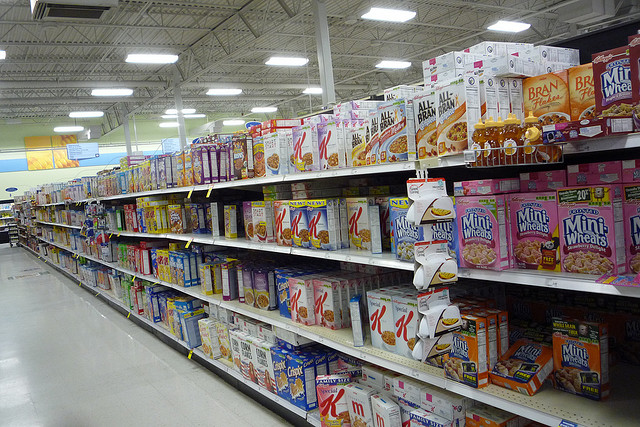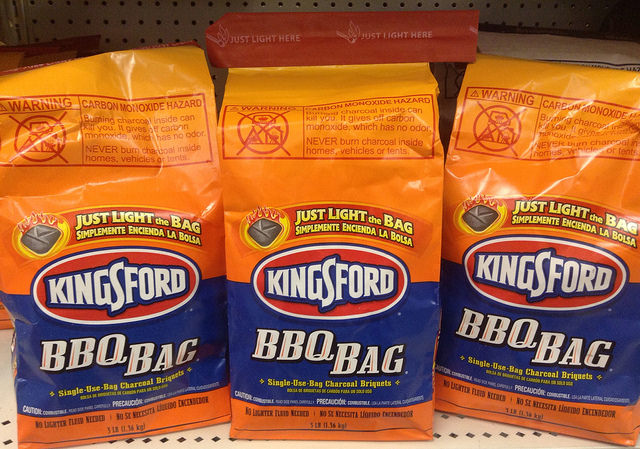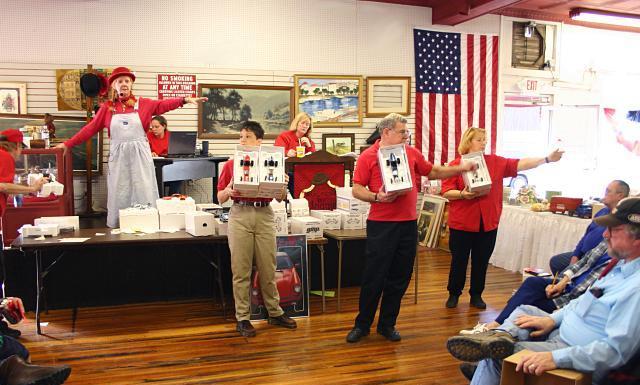15.3 Pricing Strategies
Learning Objectives
- Understand introductory pricing strategies.
- Understand the different pricing approaches that businesses use.
Once a firm has established its pricing objectives and analyzed the factors that affect how it should price a product, the company must determine the pricing strategy (or strategies) that will help it achieve those objectives. As we have indicated, firms use different pricing strategies for their offerings. And oftentimes, the strategy depends on the stage of life cycle the offerings are in currently. Products may be in different stages of their life cycle in various international markets. Next, we’ll examine three strategies businesses often consider when a product is first introduced and then look at several different pricing approaches that companies utilize during the product life cycle.
Introductory Pricing Strategies
Think of products that have been introduced in the last decade and how products were priced when they first entered the market. Remember when the iPhone was first introduced, its price was almost $700. Since then, the price has dropped considerably even for new models. The same is true for DVD players, LCD televisions, digital cameras, and many high-tech products. As mentioned in Chapter 7 “Developing and Managing Offerings”, a skimming price strategy is when a company sets a high initial price for a product. The idea is to go after consumers who are willing to pay a high price (top of the market) and buy products early. This way, a company recoups its investment in the product faster.
The easy way to remember a skimming approach is to think of the turkey gravy at Thanksgiving. When the gravy is chilled, the fat rises to the top and is often “skimmed” off before serving. Price skimming is a pricing approach designed to skim that top part of the gravy, or the top of the market. Over time, the price of the product goes down as competitors enter the market and more consumers are willing to purchase the offering.
In contrast to a skimming approach, a penetration pricing strategy is one in which a low initial price is set. Often, many competitive products are already in the market. The goal is to get as much of the market as possible to try the product. Penetration pricing is used on many new food products, health and beauty supplies, and paper products sold in grocery stores and mass merchandise stores such as Walmart, Target, and Kmart.
Another approach companies use when they introduce a new product is everyday low prices. That is, the price initially set is the price the seller expects to charge throughout the product’s life cycle. Companies like Walmart and Lowe’s use everyday low pricing. Lowe’s emphasizes their everyday low pricing strategy with the letters in their name plus the letter “t” (Lowest).
Figure 15.3
New flavors of snacks, candy, cereal, and shampoo sold in grocery stores and by mass merchandisers similar to the one in this picture are priced using a penetration pricing strategy to get consumers to try the products.
Rex Roof – Cereal Aisle – CC BY 2.0.
Pricing Approaches
Companies can choose many ways to set their prices. We’ll examine some common methods you often see. Many stores use cost-plus pricing, in which they take the cost of the product and then add a profit to determine a price. Cost-plus pricing is very common. The strategy helps ensure that a company’s products’ costs are covered and the firm earns a certain amount of profit. When companies add a markup, or an amount added to the cost of a product, they are using a form of cost-plus pricing. When products go on sale, companies mark down the prices, but they usually still make a profit. Potential markdowns or price reductions should be considered when deciding on a starting price.
Many pricing approaches have a psychological appeal. Odd-even pricing occurs when a company prices a product a few cents or a few dollars below the next dollar amount. For example, instead of being priced $10.00, a product will be priced at $9.99. Likewise, a $20,000 automobile might be priced at $19,998, although the product will cost more once taxes and other fees are added. See Figure 15.4 for an example of odd-even pricing.
Figure 15.4
The charcoal shown in the photo is priced at $5.99 a bag, which is an example of odd-even pricing, or pricing a product slightly below the next dollar amount.
Mike Mozart – Kingsford, Charcoal – CC BY 2.0.
Prestige pricing occurs when a higher price is utilized to give an offering a high-quality image. Some stores have a quality image, and people perceive that perhaps the products from those stores are of higher quality. Many times, two different stores carry the same product, but one store prices it higher because of the store’s perceived higher image. Neckties are often priced using a strategy known as price lining, or price levels. In other words, there may be only a few price levels ($25, $50, and $75) for the ties, but a large assortment of them at each level. Movies and music often use price lining. You may see a lot of movies and CDs for $15.99, $9.99, and perhaps $4.99, but you won’t see a lot of different price levels.
Remember when you were in elementary school and many students bought teachers little gifts before the holidays or on the last day of school. Typically, parents set an amount such as $5 or $10 for a teacher’s gift. Knowing that people have certain maximum levels that they are willing to pay for gifts, some companies use demand backward pricing. They start with the price demanded by consumers (what they want to pay) and create offerings at that price. If you shop before the holidays, you might see a table of different products being sold for $5 (mugs, picture frames, ornaments) and another table of products being sold for $10 (mugs with chocolate, decorative trays, and so forth). Similarly, people have certain prices they are willing to pay for wedding gifts—say, $25, $50, $75, or $100—so stores set up displays of gifts sold at these different price levels. IKEA also sets a price for a product—which is what the company believes consumers want to pay for it—and then, working backward from the price, designs the product.
Leader pricing involves pricing one or more items low to get people into a store. The products with low prices are often on the front page of store ads and “lead” the promotion. For example, prior to Thanksgiving, grocery stores advertise turkeys and cranberry sauce at very low prices. The goal is to get shoppers to buy many more items in addition to the low-priced items. Leader or low prices are legal; however, as you learned earlier, loss leaders, or items priced below cost in an effort to get people into stores, are illegal in many states.
Sealed bid pricing is the process of offering to buy or sell products at prices designated in sealed bids. Companies must submit their bids by a certain time. The bids are later reviewed all at once, and the most desirable one is chosen. Sealed bids can occur on either the supplier or the buyer side. Via sealed bids, oil companies bid on tracts of land for potential drilling purposes, and the highest bidder is awarded the right to drill on the land. Similarly, consumers sometimes bid on lots to build houses. The highest bidder gets the lot. On the supplier side, contractors often bid on different jobs and the lowest bidder is awarded the job. The government often makes purchases based on sealed bids. Projects funded by stimulus money were awarded based on sealed bids.
Figure 15.5
When people think of auctions, they may think of the words, “Going, going, gone.” Online auctions use a similar bidding process.
Wikimedia Commons – CC BY-SA 3.0.
Bids are also being used online. Online auction sites such as eBay give customers the chance to bid and negotiate prices with sellers until an acceptable price is agreed upon. When a buyer lists what he or she wants to buy, sellers may submit bids. This process is known as a forward auction. If the buyer not only lists what he or she wants to buy but also states how much he or she is willing to pay, a reverse auction occurs. The reverse auction is finished when at least one firm is willing to accept the buyer’s price.
Going-rate pricing occurs when buyers pay the same price regardless of where they buy the product or from whom. Going-rate pricing is often used on commodity products such as wheat, gold, or silver. People perceive the individual products in markets such as these to be largely the same. Consequently, there’s a “going” price for the product that all sellers receive.
Price bundling occurs when different offerings are sold together at a price that’s typically lower than the total price a customer would pay by buying each offering separately. Combo meals and value meals sold at restaurants are an example. Companies such as McDonald’s have promoted value meals for a long time in many different markets. See the following video clips for promotions of value meals in the United States, Greece, and Japan. Other products such as shampoo and conditioner are sometimes bundled together. Automobile companies bundle product options. For example, power locks and windows are often sold together, regardless of whether customers want only one or the other. The idea behind bundling is to increase an organization’s revenues.
Video Clip
McDonald’s Introduced Value Meals in 1985
Look at the cost and the amount of food in the original value meal.
Captive pricing is a strategy firms use when consumers must buy a given product because they are at a certain event or location or they need a particular product because no substitutes will work. Concessions at a sporting event or a movie provide examples of how captive pricing is used. Maybe you didn’t pay much to attend the game, but the snacks and drinks were extremely expensive. Similarly, if you buy a razor and must purchase specific razor blades for it, you have experienced captive pricing. The blades are often more expensive than the razor because customers do not have the option of choosing blades from another manufacturer.
Pricing products consumers use together (such as blades and razors) with different profit margins is also part of product mix pricing. Recall from Chapter 6 “Creating Offerings” that a product mix includes all the products a company offers. If you want to buy an automobile, the base price might seem reasonable, but the options such as floor mats might earn the seller a much higher profit margin. While consumers can buy floor mats at stores like Walmart for $30, many people pay almost $200 to get the floor mats that go with the car from the dealer.
Most students and young people have cell phones. Are you aware of how many minutes you spend talking or texting and what it costs if you go over the limits of your phone plan? Maybe not if your plan involves two-part pricing. Two-part pricing means there are two different charges customers pay. In the case of a cell phone, a customer might pay a charge for one service such as a thousand minutes, and then pay a separate charge for each minute over one thousand. Get out your cell phone and look at how many minutes you have used. Many people are shocked at how many minutes they have used or the number of messages they have sent in the last month.
Have you ever seen an ad for a special item only to find out it is much more expensive than what you recalled seeing in the ad? A company might advertise a price such as $25*, but when you read the fine print, the price is really five payments of $25 for a total cost of $125. Payment pricing, or allowing customers to pay for products in installments, is a strategy that helps customers break up their payments into smaller amounts, which can make them more inclined to buy higher-priced products.
Promotional pricing is a short-term tactic designed to get people into a store or to purchase more of a product. Examples of promotional pricing include back-to-school sales, rebates, extended warranties, and going-out-of-business sales. Rebates are a great strategy for companies because consumers think they’re getting a great deal. But as you learned in Chapter 12 “Public Relations, Social Media, and Sponsorships”, many consumers forget to request the rebate. Extended warranties have become popular for all types of products, including automobiles, appliances, electronics, and even athletic shoes. If you buy a vacuum for $35, and it has a one-year warranty from the manufacturer, does it really make sense to spend an additional $15 to get another year’s warranty? However, when it comes to automobiles, repairs can be expensive, so an extended warranty often pays for itself following one repair. Buyers must look at the costs and benefits and determine if the extended warranty provides value.
We discussed price discrimination, or charging different customers different prices for the same product, earlier in the chapter. In some situations, price discrimination is legal. As we explained, you have probably noticed that certain customer groups (students, children, and senior citizens, for example) are sometimes offered discounts at restaurants and events. However, the discounts must be offered to all senior citizens or all children within a certain age range, not just a few. Price discrimination is used to get more people to use a product or service. Similarly, a company might lower its prices in order to get more customers to buy an offering when business is slow. Matinees are often cheaper than movies at night; bowling might be less expensive during nonleague times, and so forth.
Price Adjustments
Organizations must also decide what their policies are when it comes to making price adjustments, or changing the listed prices of their products. Some common price adjustments include quantity discounts, which involves giving customers discounts for larger purchases. Discounts for paying cash for large purchases and seasonal discounts to get rid of inventory and holiday items are other examples of price adjustments.
A company’s price adjustment policies also need to outline the firm’s shipping charges. Many online merchants offer free shipping on certain products, orders over a certain amount, or purchases made in a given time frame. FOB (free on board) origin and FOB delivered are two common pricing adjustments businesses use to show when the title to a product changes along with who pays the shipping charges. FOB (free on board) origin means the title changes at the origin—that is, when the product is purchased—and the buyer pays the shipping charges. FOB (free on board) destination means the title changes at the destination—that is, after the product is transported—and the seller pays the shipping charges.
Uniform-delivered pricing, also called postage-stamp pricing, means buyers pay the same shipping charges regardless of where they are located. If you mail a letter across town, the postage is the same as when you mail a letter to a different state.
Recall that we discussed trade allowances in Chapter 12 “Public Relations, Social Media, and Sponsorships”. For example, a manufacturer might give a retail store an advertising allowance to advertise the manufacturer’s products in local newspapers. Similarly, a manufacturer might offer a store a discount to restock the manufacturer’s products on store shelves rather than having its own representatives restock the items.
Reciprocal agreements are agreements in which merchants agree to promote each other to customers. Customers who patronize a particular retailer might get a discount card to use at a certain restaurant, and customers who go to a restaurant might get a discount card to use at a specific retailer. For example, when customers make a purchase at Diesel, Inc., they get a discount coupon good to use at a certain resort. When customers are at the resort, they get a discount coupon to use at Diesel. Old Navy and Great Clips implemented similar reciprocal agreements.
A promotion that’s popular during weak economic times is called a bounce back. A bounce back is a promotion in which a seller gives customers discount cards or coupons (see Figure 15.6) after purchasing. Consumers can then use the cards and coupons on their next shopping visits. The idea is to get the customers to return to the store or online outlets later and purchase additional items. Some stores set minimum amounts that consumers have to spend to use the bounce back card.
Key Takeaway
Both external and internal factors affect pricing decisions. Companies use many different pricing strategies and price adjustments. However, the price must generate enough revenues to cover costs in order for the product to be profitable. Cost-plus pricing, odd-even pricing, prestige pricing, price bundling, sealed bid pricing, going-rate pricing, and captive pricing are just a few of the strategies used. Organizations must also decide what their policies are when it comes to making price adjustments, or changing the listed prices of their products. Some companies use price adjustments as a short-term tactic to increase sales.
Review Questions
- Explain the difference between a penetration and a skimming pricing strategy.
- Describe how both buyers and sellers use sealed bid pricing.
- Identify an example of each of the following: odd-even pricing, prestige pricing, price bundling, and captive pricing.
- What is the difference between FOB origin and FOB destination when paying for shipping charges?
- Explain how trade allowances work.




